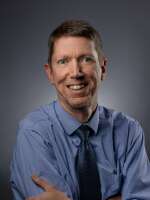Planning to travel across town or take a quick day trip to experience the April 8 total solar eclipse?
There's a good chance you'll experience something much less profound on the way back: a hypnotizing array of taillights while you sit in traffic.
“It is going to be the single largest travel event in United States this year,” said Jim Stack, head of the Genesee Transportation Council, covering Rochester and its surroundings.

The group has been doing traffic modeling and working with area planners and emergency responders to figure out how best to keep people moving. Roads could start getting jammed up around 3:30 p.m. that Monday, after totality has ended, worsen during rush hour and not let up until evening.
“It's going to be much busier than anybody is used to — for several hours,” Stack said. “I would think, gosh, at least five.”
Roads that are typically congested will be worse. And others that aren’t typically busy will get crowded.
Buffalo and places west are in the eclipse path, so most visitors traveling to Rochester and the Finger Lakes are likely to come from the south and east. And when it’s over? Past eclipses elsewhere have shown most day trippers head back within two hours, and a majority of those try to leave within 15 minutes, Stack said.
“And then the other thing we're going to be faced with is, after the first hour ... there's a surge of traffic coming from Buffalo, the early departures from Buffalo are meeting up with the later departures from Rochester,” Stack said, which then rolls into rush hour.
The heaviest traffic could be to the south and east of Rochester. Specifically, Interstates 390 and 490, the Thruway, as well as Route 15 toward Pennsylvania, and Routes like 5 and 20, or 96.
In the group’s traffic models, roadways colored green and yellow (for minimal congestion) during a typical 4 to 5 p.m. rush hour become solidly red on April 8.

Officials are encouraging visitors to stay an extra day in part to lessen the congestion.
"Anything that's a significant road, that, you know, Google Maps might tell an out-of-town visitor, ‘Hey, take this road.’ Yeah, those are going to be even busier,” Stack said. “If you know the back road neighborhood, you're going to be able to get around a little bit.”
All this could pose an issue for emergency responders. And hospitals.
"Every EMS agency in the community is going to try to staff up a little bit,” said Dr. Jeremy Cushman, the Monroe County EMS medical director.
Strong Memorial Hospital is the region’s only Level One trauma center, and the roads around the Elmwood Avenue facility can get congested on a normal day. Strong also has the region’s only “off-campus” emergency department, located in Brockport — where SUNY Brockport is anticipating possibly the largest single gathering in the area at upward of 5,000 people.
The concern isn’t so much about a big influx of patients but rather that people, ambulances and staff are able to get to — and, if need be, between — the two facilities in a timely manner.
“Essentially this is a business day for us — business as any other day, for all practical purposes,” said David Chafetz, the director of Strong Memorial Hospital's Emergency Preparedness Team. “We're anticipating that volumes probably will be a little bit lighter for the routine scheduled care. However, emergencies and urgent illnesses occur at all times of the day and year.
“So we will be ready.”
Lane closures on major roadways in the region will be pulled back that day, officials said, and any large construction projects affecting key routes have been delayed.
In Monroe County, there aren’t any plans to change traffic patterns by blocking roads or turning two-way streets one way.
But it’s a different story in Wayne County, where eclipse planning has focused on expected large gatherings along the lakeshore, in places like Sodus and Chimney Bluffs State Park. Officials there say they are preparing as they would for the Fourth of July – or a blizzard. Ridge Road and Route 104 are likely to be jammed, so north-south routes that don’t have signalized intersections at the highway will be blocked to through traffic.
Genesee County is looking to deploy its public works staff and vehicles to help stranded motorists.
The challenge in trying to plan for something like the eclipse is ... well, it hasn’t happened here since 1925. Nobody quite knows what to expect.
Cushman is hopeful this is all much ado about nothing.
"I think in the end, we're going to be doing an awful lot of planning for, for almost a non event,” he said. “That's how we want it to end.”
So plan ahead. Expect traffic. Or better yet, Cushman said: “Every location in Monroe County is a great spot to watch it. So just stay home.”





